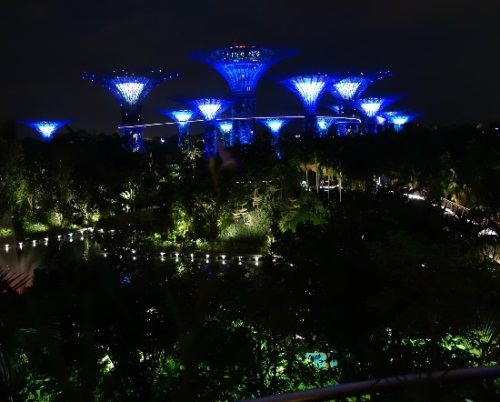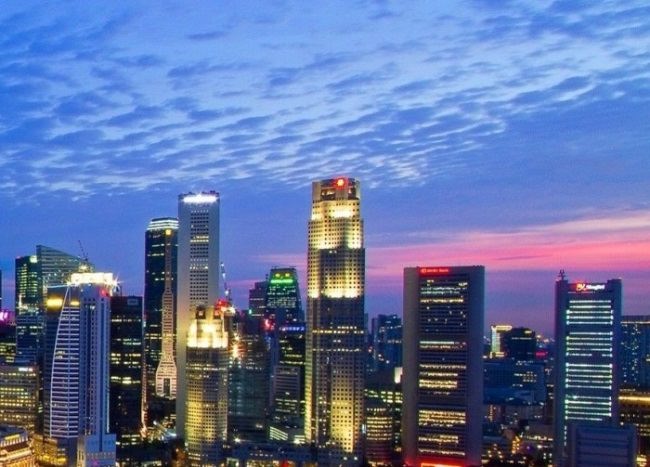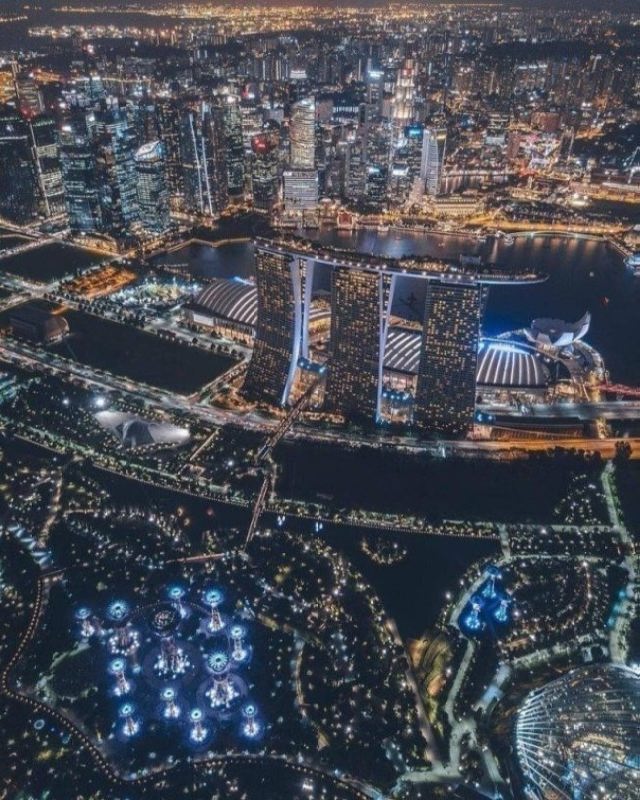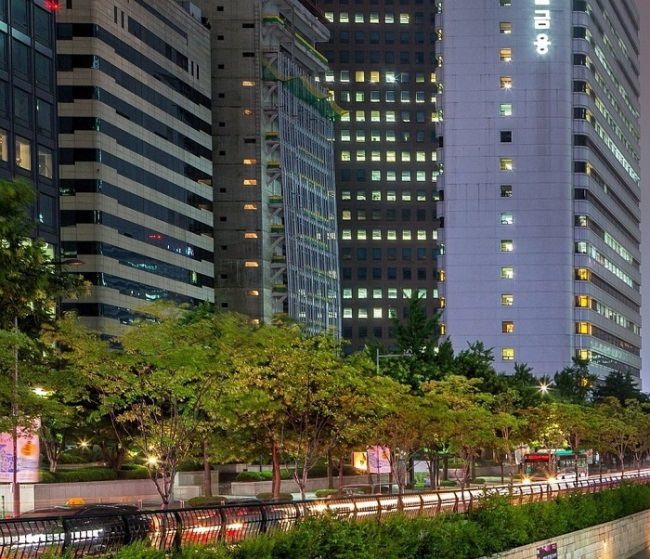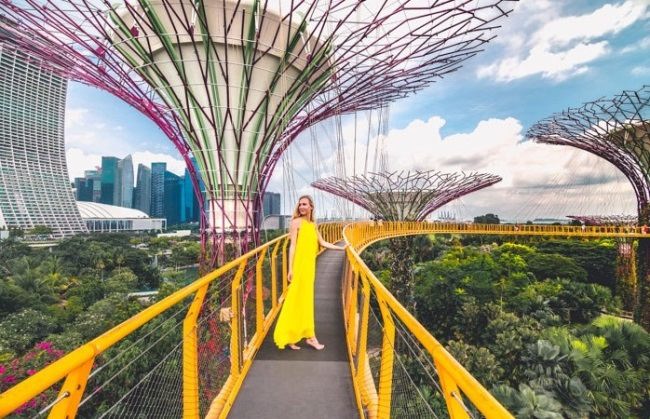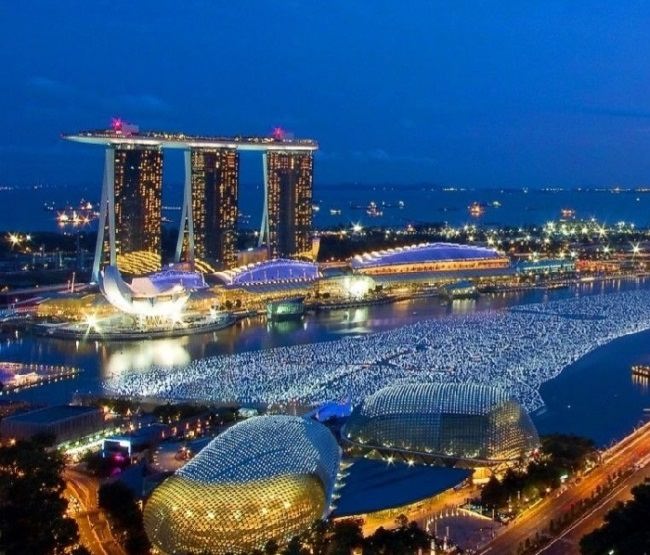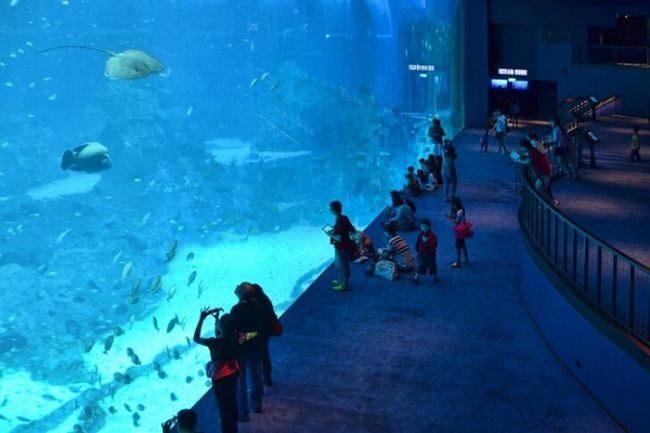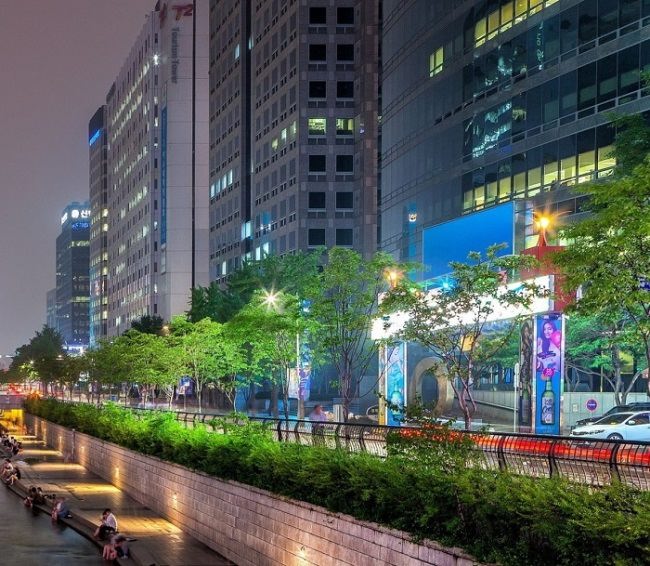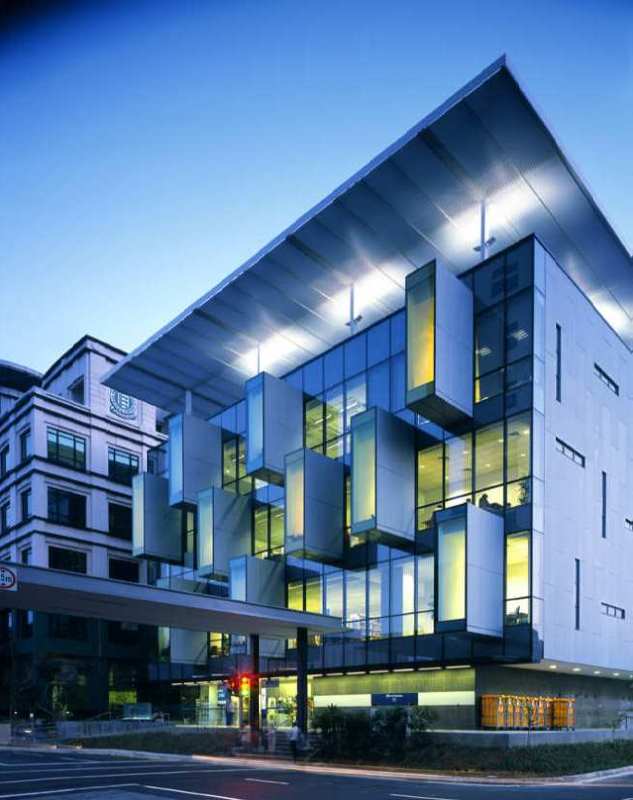Singapore melting pot blue color
In fact, every country has its own, distinctive color. For example, we associate green color with Ireland, but Spain – with red color. Also, country of lakes, good ecology and clean water – Finland, which we associate with blue. Mongolia, the country of steppes and desert terrain – with a gray-yellow color. Traditionally, Russian associate their country with pink, just because on all political maps it is pink.
And what color is Singapore? In fact, nobody can answer. However, in my opinion, it is blue, even deep blue, and especially at night.
Some information about Singapore:
Singapore’s status as a successful melting pot for diverse races is remarkable, achieved within a short time, since the island became a republic in 1965. The government has, to a large extent, succeeded in ensuring harmony between the races by means of legislation. Also, thanks to good public housing and education schemes, and compulsory military enlistment for males aged 18. The locals, especially among the younger population, see themselves first as Singaporeans and only secondly as Chinese, Malays, Indians or Eurasians.
Noteworthy, most Singapore Chinese today are Hokkiens (42 per cent) and their ancestors came from Fujian province. The other main dialect groups are the Teochews (23 per cent) who were from Guangdong, the Cantonese (17 per cent) from Guangzhou, Hakkas (7 per cent) from central China and the Hainanese (6 per cent) from Hainan Island. Besides, each dialect group had its own festivities, prayed to its favourite deities in Buddhist, Taoist or Confucianist temples, and enjoyed its own music, literature, operas and cuisine. The Teochews and Cantonese were famous for their street operas, and some opera troupes still perform today. In cuisine, the Hainanese noted for their chicken rice; and the Hokkiens for their noodle dishes and the Teochews for their rice porridge.
A more persistent division within the Chinese community is between the Chinese-educated and the English-educated. The latter tend to be regarded as more liberal and Westernized in their outlook. Meanwhile, the more conservative Chinese-educated sometimes see themselves as bastions of the preservation of Chinese culture. The government still tries, for example through the “Speak Mandarin” campaign, to balance the need for the Chinese to maintain their Chinese heritage so as to preserve their Asian identity with the need to be proficient in English in order to be able to compete internationally.
The term “Singapore Malays” usually refers to Malays who are descended from migrants from the Malay States (mainly Johore and Malacca) and the former Dutch East Indies (presentday Indonesia). The latter included the Bugis from the Celebes, the Riau Malays, the Javanese and the Minangkabau (from Sumatra). The descendants of Arab migrants are sometimes called “Singapore Malays”; they share the same religion, Islam.
With the introduction in the 1970s of widespread home ownership through government-built housing, they dismantled Malay enclaves. During the Hari Raya festival, the apartments occupied by Malays – recognized by the decorative lights that adorn their windows. Compared to other groups, the Malays tend to be more traditional, especially in their dress during festivities. Many Malay women wear the tudung (Islamic head scarf). Malay is the national language and one of the official languages (the others being English, Mandarin and Tamil). The national anthem (Majulah Singapura) is in Malay.
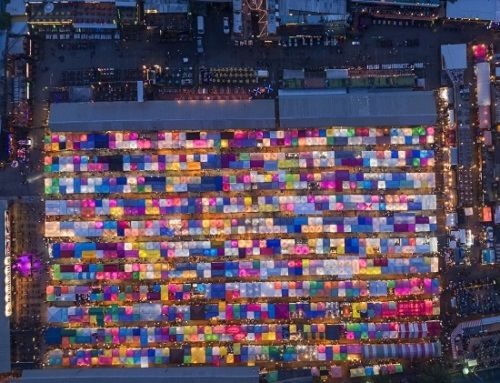
The night market, consisting of hundreds of colorful canopies, looks like a popular Tetris game from the top. The shot by an amateur photographer Pradeep Raja. Life in color – Singapore melting pot blue color
The Singapore Indians are not a homogeneous racial group and can be differentiated in terms of languages and religions. About 60 per cent of the Singapore Indians are Tamil-speaking and come from either Tamil Nadu or the Tamil enclave in northern Sri Lanka. Other languages spoken by the Indian community include Malayalee (8 per cent), Punjabi, Bengali and Telugu. The government recognizes Tamil as the official language of the Indian community. Hindu festivals such as Deepavali, Thimithi and Thaipusam and the anniversaries of the various deities in the Hindu pantheon are the best occasions to catch a glimpse of traditional Indian culture, and Little India is the place to be on such occasions.
For many years, the Eurasians (Singaporeans of mixed Asian and European parentage) have struggled to find their rightful place in a society dominated by more homogeneous races such as the Chinese, Malays and Indians. Until the 1960s, migration to the West and especially to Australia seemed to be the best option for a number of Eurasians. Over the course of the 1990s, however, through the efforts of the Eurasian Association and with the government’s assistance, the Eurasian community seemed to find their feet. Now – firmly entrenched as one of the four main racial categories in Singapore.
Being mainly Christian and Westernized, Eurasians celebrate Western festivals such as Christmas and Easter, but enliven these festivals with their Asian heritage. Eurasian food, for example, is a blend of Western roasts and meat pies with Indian curries such as the Goan “devil curry” and Chinese dishes such as chap chye (a vegetable dish). Some older Eurasians speak a local Portuguese dialect, Kristang.
Singapore’s transformation from a migrant society to nationhood is entering yet another stage. Concerned that its quite small population might be disadvantaged in competition with the rest of the world in the IT-based global economy, the government has embarked on an active campaign to attract foreign talent from both East and West. Some of the visible signs of the influx of these new migrants are Chinese who speak with Beijing, Hongkong, Taipei or Indonesian accents, and ang mohs (“Caucasians”) who now live, in increasing numbers, in the heartlands of Singapore’s housing estates.
Chinese merchants who settled in Malacca during the 18th century and married Malay women are called Peranakans. The word “Peranakan” means “half-caste” in Malay. Male Peranakans are called babas and female Peranakans are called nonyas. Malacca gradually lost its pre-eminent position as a port to Singapore, and many Peranakan (also called Straits Chinese) families came to Singapore as their businesses demanded it. Today, less than 1 per cent of Singapore’s population is Peranakan, but Peranakan culture has had a great influence on the island state.
source of images top10.travel
